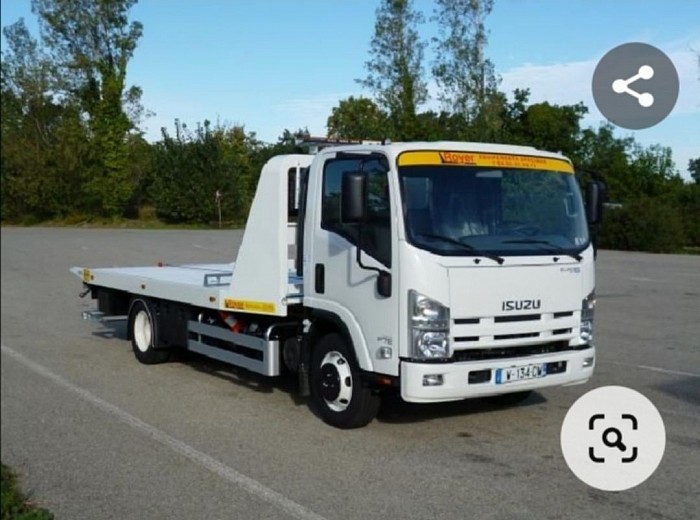The Future of Contactless Travel: Tech Trends Post-Pandemic
The travel industry experienced a profound disruption due to the COVID-19 pandemic. In 2023, global travel technology spending rose to $13.2 billion, reflecting a 15% increase from 2021. Meanwhile, 72% of travelers now prefer contactless solutions to minimize physical touchpoints during trips. These figures underscore a significant shift in the adoption of travel-technology solutions focused on safety, efficiency, and convenience.
Travel-technology solutions that enable contactless experiences have become essential for recovery. They not only reduce health risks but also improve operational resilience. This article explores the future of contactless travel by examining key technological trends shaping the post-pandemic landscape. It offers an in-depth, technical analysis supported by recent data, real-world examples, and practical insights.
Why Contactless Travel Matters
Contactless travel minimizes physical interaction between travelers, staff, and surfaces. This approach gained urgency during the pandemic and remains vital due to evolving health concerns.
Benefits of Contactless Travel
- Reduced risk of disease transmission
- Faster processing times at airports, hotels, and transport hubs
- Enhanced traveler convenience and satisfaction
- Improved operational efficiency for service providers
Adopting travel-technology solutions with contactless features addresses these benefits while aligning with regulatory guidelines.
Key Technology Trends Driving Contactless Travel
The adoption of several cutting-edge technologies enables the shift toward contactless travel. Below are the most prominent ones.
1. Biometric Identification and Verification
Biometric technologies use unique physiological characteristics like fingerprints, facial recognition, and iris scans to verify traveler identities.
- Use cases: Airport security checks, boarding gates, hotel check-ins
- Advantages: Speed up identity verification, reduce document handling, enhance security
Example: Dubai International Airport has implemented biometric gates allowing passengers to check-in and board using facial recognition alone. This system reduced processing time by 50%, according to Dubai Airports data.
2. Mobile-Based Digital Wallets and E-Tickets
Mobile apps that store boarding passes, hotel reservations, and payment methods enable travelers to complete transactions without physical documents or cash.
- Features: QR code scanning, NFC payments, real-time updates
- Benefits: Minimized physical contact, streamlined user experience, instant notifications
Stat: Over 60% of global travelers used mobile boarding passes in 2023, up from 38% in 2019.
3. Internet of Things (IoT) for Smart Environments
IoT connects physical devices through the internet to automate and monitor travel facilities.
- Applications: Contactless room entry, smart luggage tracking, automated cleaning alerts
- Impact: Increased operational efficiency, enhanced hygiene standards
Case Study: Marriott International deployed IoT sensors in some hotels to monitor room occupancy and cleanliness. These sensors enable contactless check-in and automatic sanitization alerts.
4. Artificial Intelligence (AI) and Chatbots
AI-powered chatbots and virtual assistants handle traveler queries and bookings via natural language processing.
- Functions: 24/7 customer service, flight status updates, travel advisories
- Advantages: Reduced human contact, faster response times
Example: KLM Royal Dutch Airlines uses AI chatbots on messaging apps, reducing call center volume by 40%.
5. Voice Recognition and Control
Voice-based interfaces allow travelers to operate devices and access information hands-free.
- Use cases: Voice check-ins, voice-activated hotel room controls, travel itinerary updates
- Benefits: Enhanced accessibility, reduced touchpoints
Challenges in Implementing Contactless Travel Technologies
Despite many advantages, the deployment of contactless travel-technology solutions faces some challenges.
Data Privacy and Security Concerns
Handling sensitive biometric and personal data requires strict compliance with privacy laws such as GDPR. Secure data storage and transmission are critical.
Infrastructure Costs
Upgrading facilities to support biometric scanners, IoT devices, and mobile integration can be expensive, particularly for smaller operators.
User Adoption and Accessibility
Not all travelers are comfortable with or have access to digital tools, requiring alternative options to maintain inclusivity.
Future Outlook: Innovations on the Horizon
The future of contactless travel will likely involve more integration, automation, and personalization, enabled by advancing technologies.
Contactless Biometrics Combined with Blockchain
Blockchain could provide decentralized, tamper-proof identity verification systems, enhancing traveler data security and privacy.
Augmented Reality (AR) for Contactless Navigation
AR apps could guide travelers through airports and hotels with real-time, touch-free directions.
Advanced Robotics for Sanitization and Service
Robots could perform cleaning, delivery, and customer service tasks autonomously, further reducing human contact.
Table: Contactless Travel Technologies and Their Key Benefits
| Technology | Primary Use Case | Key Benefits | Real-World Example |
| Biometric Identification | Airport security, hotel check-in | Faster verification, improved security | Dubai International Airport |
| Mobile Digital Wallets | Boarding passes, payments | Convenience, reduced contact | Global airline mobile apps |
| IoT Devices | Smart rooms, luggage tracking | Automation, hygiene monitoring | Marriott IoT-enabled hotels |
| AI Chatbots | Customer service, booking | 24/7 support, reduced human contact | KLM Airlines AI chatbot |
| Voice Recognition | Voice check-in, device control | Accessibility, contactless interaction | Emerging hotel voice services |
Practical Examples of Contactless Travel Solutions
Singapore Changi Airport
Changi Airport adopted a comprehensive suite of contactless solutions post-pandemic. This includes facial recognition for immigration, mobile boarding passes, and automated bag drops. These technologies helped Changi maintain a 90% passenger satisfaction rate during recovery.
Hilton Hotels
Hilton’s “Digital Key” allows guests to use their smartphones to unlock rooms. This feature reduces front desk interaction and streamlines check-in. Hilton reported a 30% increase in mobile key usage since 2021.
Conclusion
The future of contactless travel relies heavily on advanced travel-technology solutions that prioritize safety and user convenience. Biometric identification, mobile wallets, IoT, AI, and voice recognition technologies are shaping a new era in travel.
Travel businesses must invest strategically in these technologies while addressing challenges like data privacy and cost. Those who adapt will offer safer, more efficient travel experiences in the post-pandemic world.
With ongoing innovation and adoption, contactless travel will become the norm, setting new standards for the global travel industry.
Frequently Asked Questions (FAQs)
1. What is contactless travel technology?
Contactless travel technology refers to digital tools and systems that allow travelers to complete tasks without physical interaction. Examples include biometric scanning, mobile boarding passes, and automated check-ins.
2. How does biometric identification improve travel safety?
Biometric identification uses unique physical traits like facial recognition or fingerprints, reducing the need for physical documents and touchpoints. This lowers the risk of disease transmission and enhances security.
3. Are contactless travel solutions secure?
Yes, but they require strong data protection measures. Technologies must comply with privacy regulations such as GDPR and use encryption to safeguard personal information.
4. What challenges do travel businesses face in adopting contactless tech?
High infrastructure costs, data privacy concerns, and ensuring accessibility for all travelers are common challenges. Businesses must balance technology investment with user convenience and security.
5. Will contactless travel replace traditional travel processes?
Contactless travel will increasingly complement and sometimes replace traditional methods. However, inclusive options will remain important to serve all traveler needs and preferences.













